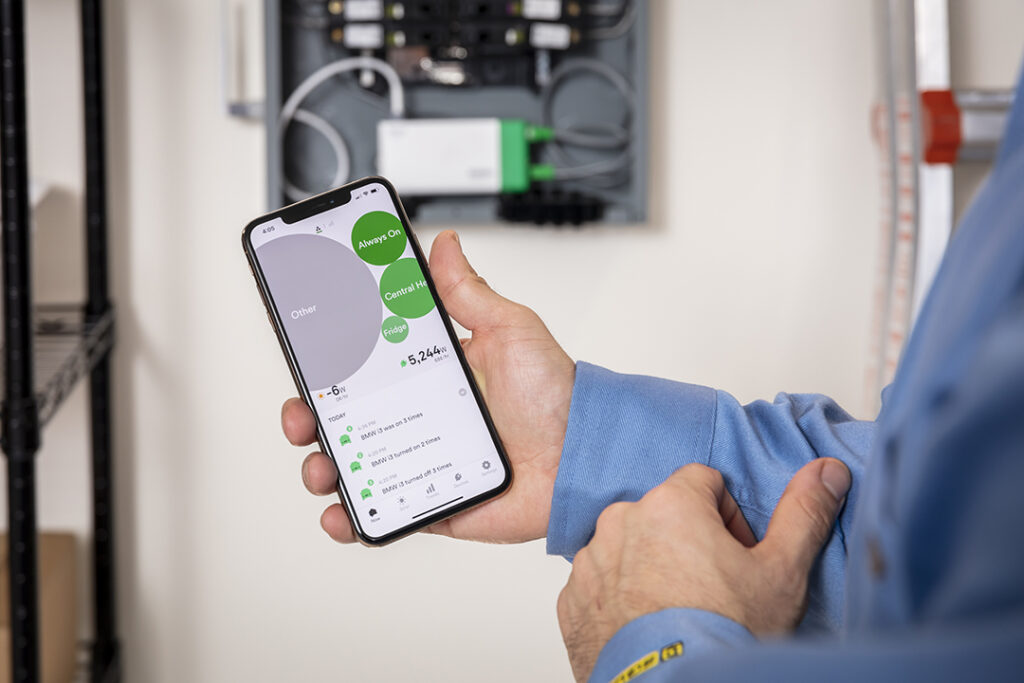What are some ways we can improve energy efficiency in our homes? Ansul Rajgharia, director, connected products and surge, Schneider Electric, and Bradford Willis, director, strategic customers and programs, Schneider Electric, sit down with Connected World Editorial Director Peggy Smedley to talk about technologies for the home and the benefits of such systems.
What are some ways homeowners can improve energy efficiency?
Residential energy usage has experienced quite the spike in the last two-plus years, with people spending more time at home than ever. As a result, costs are increasing, and homeowners are looking for effective ways to save money. The first step to improving efficiency at home is to understand where energy is being wasted. By monitoring energy usage, homeowners can pinpoint which devices are using the most energy and identify ways they can save. Some simple ways homeowners can save on energy bills—while lessening their carbon footprint—include using LED bulbs, unplugging devices, and purchasing energy efficient appliances to replace outdated ones. The old refrigerator in your garage is doing more than taking up space—it’s consuming unnecessary energy!
What technologies might they want to consider?
Beyond the basics, homeowners should highly consider investing in sustainable technologies. Top of mind should be purchasing an energy monitor system to understand usage in the home, as well as identifying opportunities to decrease sources of waste. Schneider Electric’s Wiser Energy monitor allows homeowners to measure electricity use for every device in their home through a connected app, giving the question, “why is my electric bill so high?” an easy answer. Other technologies to consider include a smart thermostat for instant adjustment when temperatures are fluctuating, and Square D Connected Wiring Devices—a lineup of smart electrical switches, receptables, dimmers, and sensors that calculate energy use down to the plug level.

In addition to improving energy efficiency, what other benefits does this technology provide?
Smart home technologies offer a multitude of benefits beyond energy efficiency. By implementing a path of numerous energy sources, homeowners are future-proofing their home and ensuring that daily life can go on even in the case of an outage (brought on by extreme weather or grid failure). The Square D Energy Center—an interoperable circuit panel that offers control to switch from utility to alternative power sources—is an example of a technology that focuses on this benefit of resiliency. Energy-related innovations also act as an operational system that homeowners can easily manage, while instilling the security and comfort that is a crucial factor in every home. Curling iron left plugged in and on while away? Now, you can quickly turn it off from an app. Additionally, having the capabilities to adjust energy use based on whatever special life moment is occurring—movie nights, vacation, birthday celebrations—through a simple command brings a new meaning to the word home. With simplified energy automation, families can remove the burden of constantly keeping an eye for spikes in their utility bills and simply enjoy being present in their homes.
How can they decide what technologies might be best for them?
Sustainable technologies are a great investment. Although at times they may be a bit more costly than alternatives, their long-term benefits surpass the upfront costs. That said, it is important for homeowners to determine the specifics of their energy goals before putting money down. An important first step is to understand at a granular level, and in realtime, where and how energy is being used. Certain innovations are catered toward specific energy-saving capabilities, whether that be efficiency, resiliency, or utility bill savings. Location also needs to be factored in when selecting a technology as dynamic energy rates fluctuate based on geography, and not all alternative power sources may be practical. Homeowners based in California looking for great control, for example, should consider a smart electrical panel as it’s an excellent solution for both grid outages and pricing. For customers outside of California, the more widely accepted connected wiring devices offer another manageable solution that benefits a variety of different locations.

What is your vision for the future of the connected home?
The smart home of Hollywood films is already a reality thanks to the strides we have made in bringing the connected home to life. Through the development of sustainable innovations, the home has been given a voice, allowing the inhabitants within it to live a much easier life. In the future, the home will be a hub for the intersection of electric and digital; it will be more safe, efficient, and resilient. Rather than using traditional power sources (utility, natural gas), the home will operate on alternative solutions such as battery and solar. Energy monitoring capabilities and universal devices will become the norm to optimize comfort, and savings. Through the common adoption of these technologies, predictive maintenance will no longer be a burden, as appliances can easily give warning to power failure and create opportunity for homeowners to halt trouble in its tracks.
Please add other suggestions you might have.
Prior to monitoring energy surpluses and wastes, a home energy assessment by a local provider is helpful for determining a benchmark reference to energy usage within the community. This way, homeowners can assess whether they are high or low against their city’s average consumption. A DIY solution to determining this is through the use of a smart meter—local energy statistics can be found through utility companies and are often available online. If the information is easily accessible, homeowners can digest what the numbers mean about their own usage to curb any unwanted inefficiencies. Also, customers can explore online resources, such as Energy Sage, that help provide insight to determine the proper steps and solutions for improving energy efficiency.


